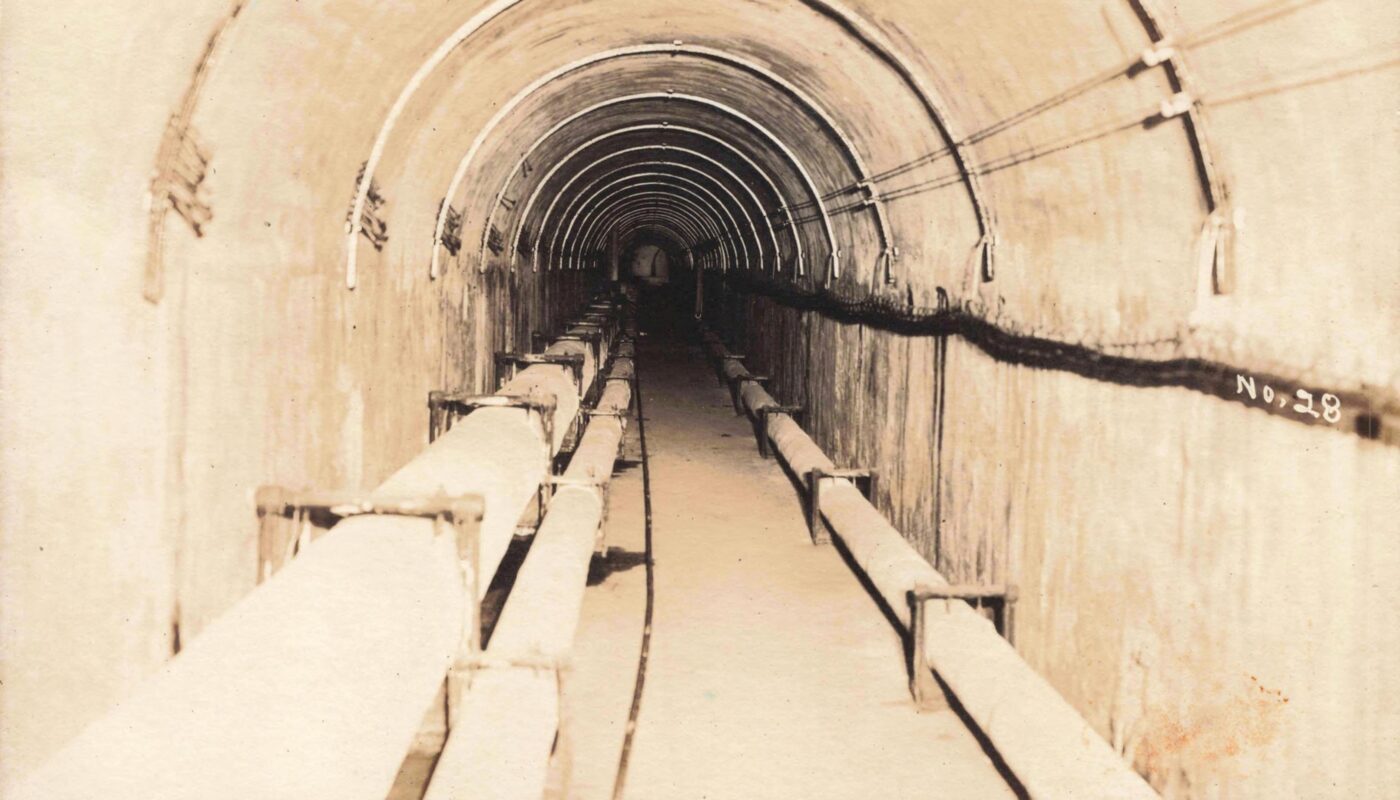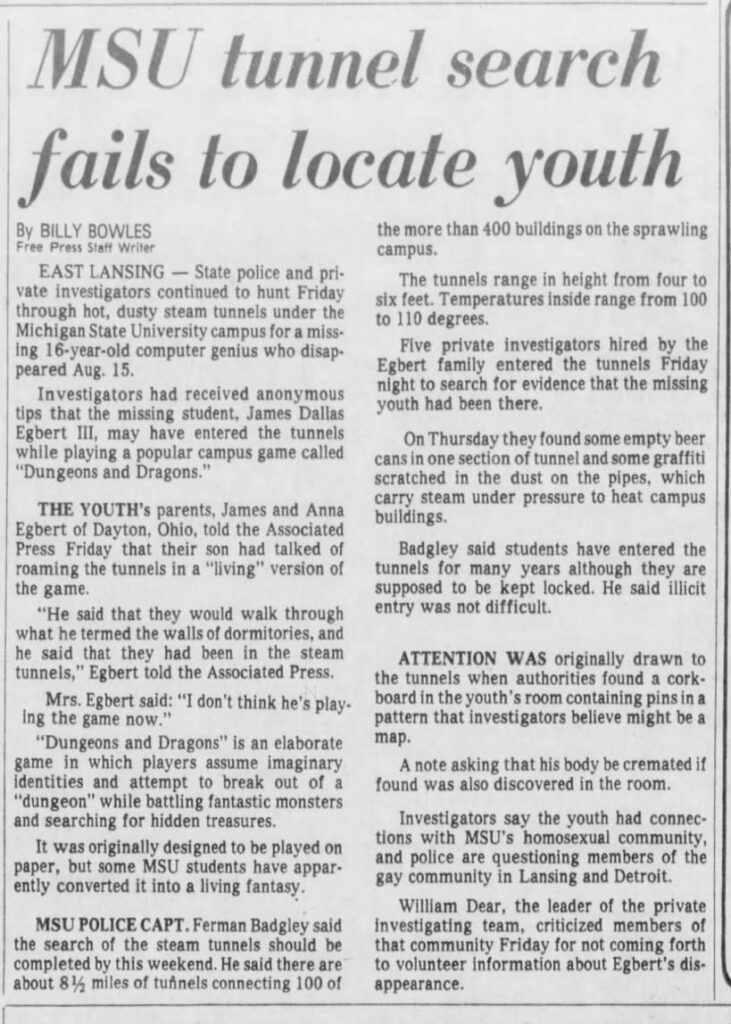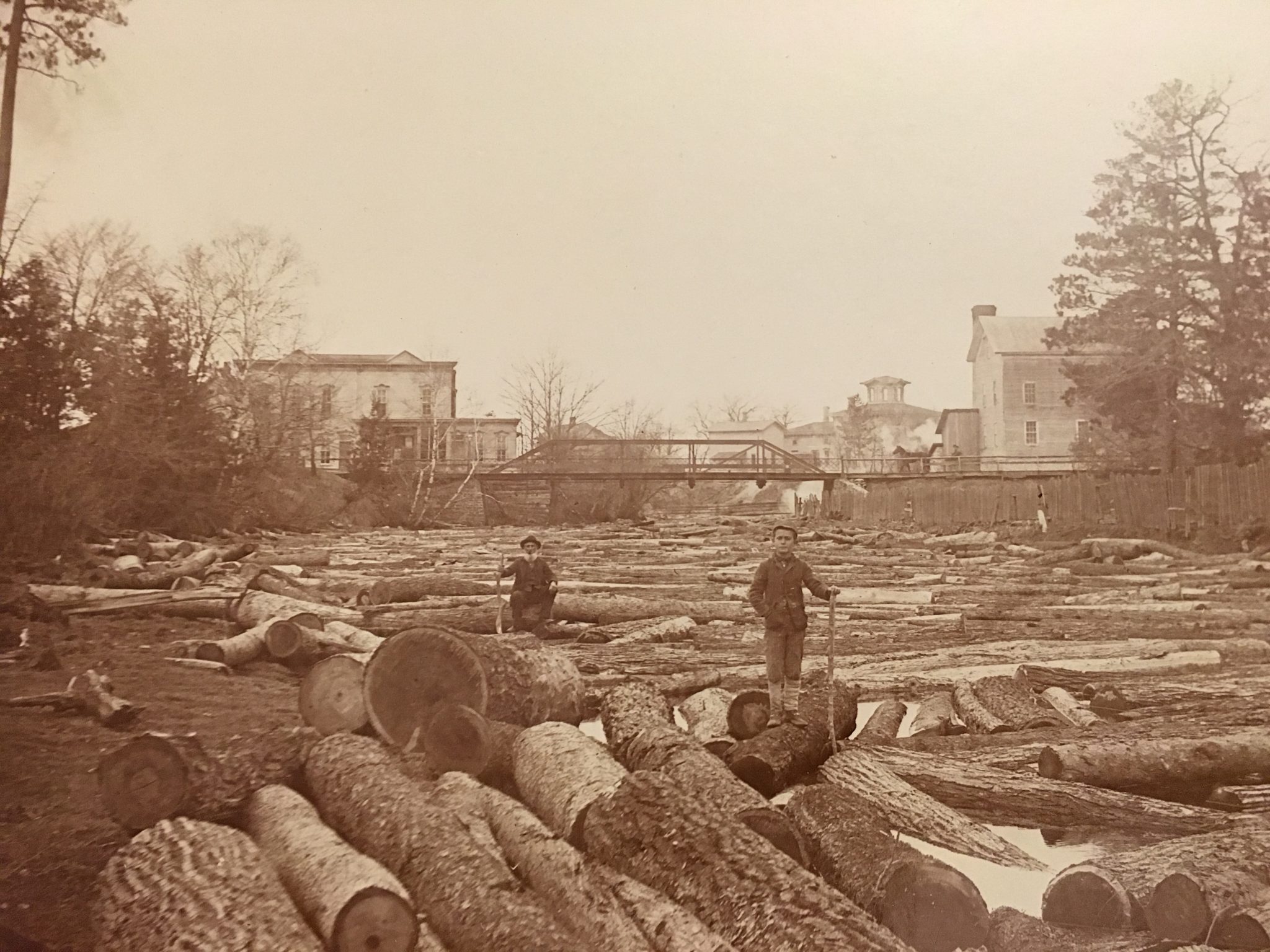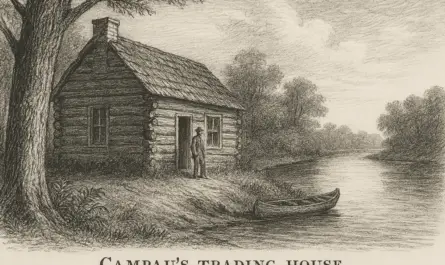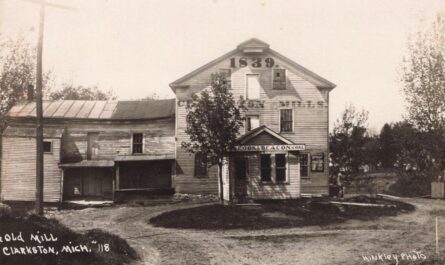Beneath Michigan State University lies a web of steam and utility tunnels—characterized by low ceilings, concrete arches, and hot pipes that push heat and power to the buildings above. Most students never see them. Access is restricted. But for decades, the tunnels have been the subject of campus stories.
Student Disappears in the Tunnels
In August 1979, James Dallas Egbert III, a first-year student, disappeared. A private investigator hired by his family told reporters that students might be using the tunnels to act out fantasy games. News outlets repeated it. The idea that students played live Dungeons & Dragons underground spread fast, from East Lansing to national TV. It fit the mood of the moment: new game, new technology on campus, and anxious parents far from home.
What the headlines missed was the nuance. Later accounts— including the investigator’s own book—said the game wasn’t the cause of Egbert’s troubles. The tunnels became a backdrop for rumor, not proof of anything larger. Still, the story stuck. Through the early 1980s, students traded secondhand tales: a friend of a friend who knew a way in, a flashlight beam in the dark, dice clattering on concrete. Most of it was hearsay. Much of it was bragging.
The Book – The Dungeon Master
The Dungeon Master: The Disappearance of James Dallas Egbert III (1984) is private investigator William Dear’s account of the 1979 case at Michigan State University. Dear argues that early reporting fixated on steam tunnels and Dungeons & Dragons, distorting what actually happened. The book contends Egbert’s struggles were personal and complex, not the result of a game, and faults sensational coverage for cementing a false narrative. It remains a key source for separating rumor from record in the MSU tunnel story.
The Role of the MSU Tunnels
The real tunnels are practical. They carry steam, condensate, electrical lines, and communications. Temperatures can spike. Air can be stale. Surfaces are slick. That’s why the university keeps them locked and patrolled. When maintenance crews enter, they carry radios, wear protective gear, and follow procedures. It is infrastructure, not an underground clubhouse.
A Tunnel Tale at MSU
Yet the myth endures because it is cinematic: a narrow corridor stretching into shadow, the steady hum of pipes, the thought that a hidden world sits just below the sidewalks on Grand River and Farm Lane. It’s the kind of story that freshmen hear during move-in and repeat to their families on game day: “Somewhere under our feet is where they played.”
Why the Legend Endures
Today, the tunnels remain off-limits except to authorized staff. The Egbert case is remembered as a cautionary tale about rumor, media, and how quickly an unverified claim can harden into “fact.” What’s certain is simple: MSU’s tunnels keep the campus running. The rest is legend—told again each fall, as new Spartans arrive and old stories find new listeners.
